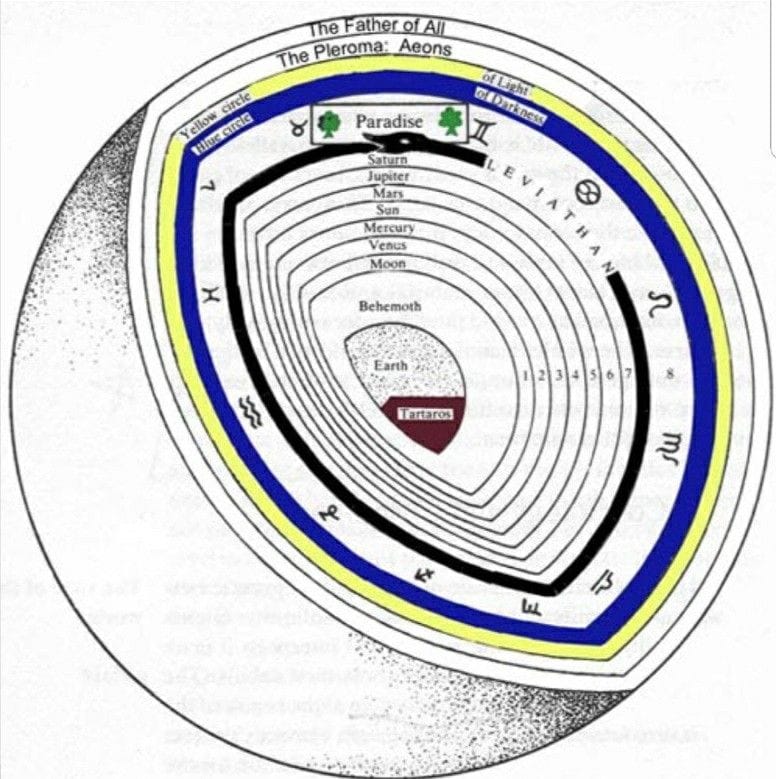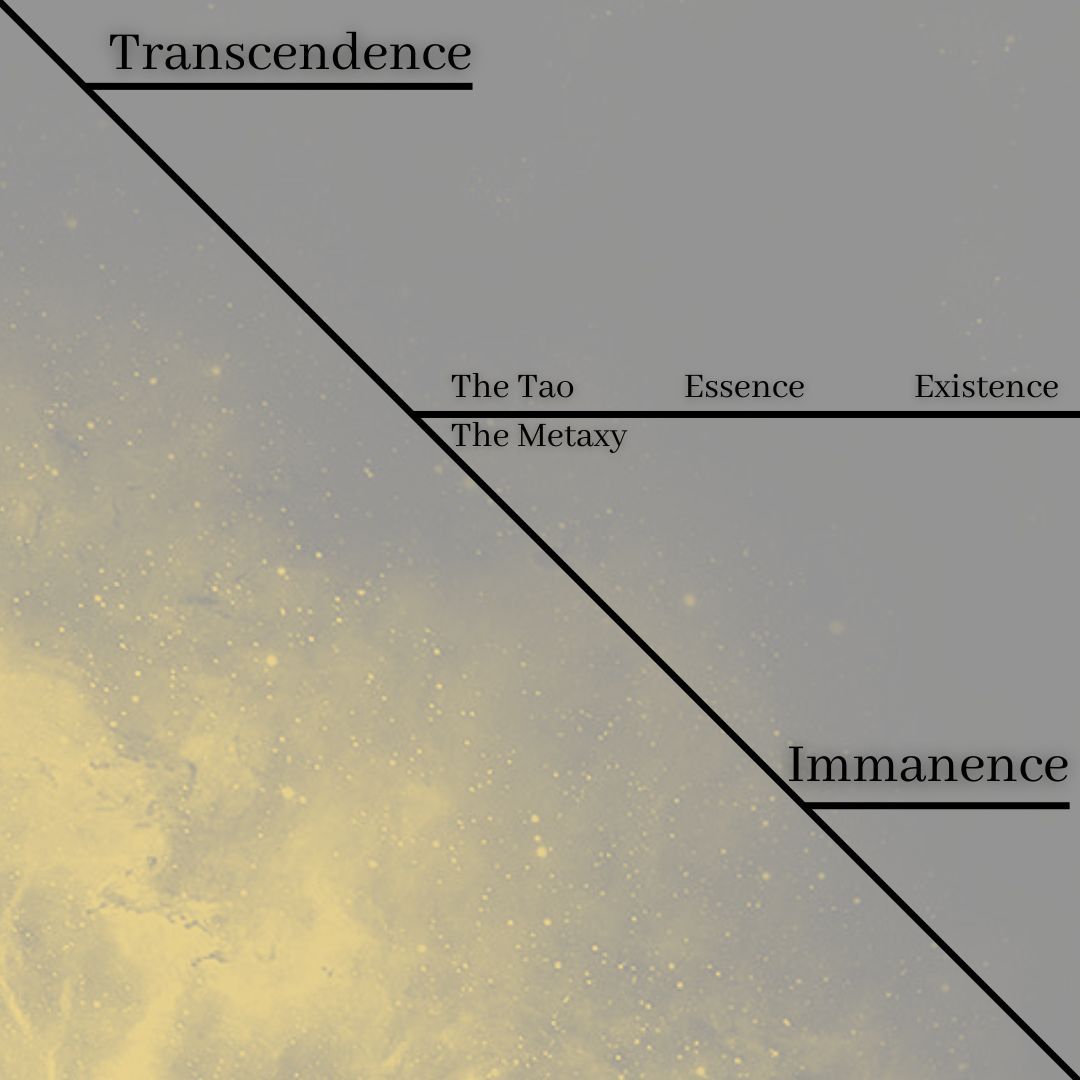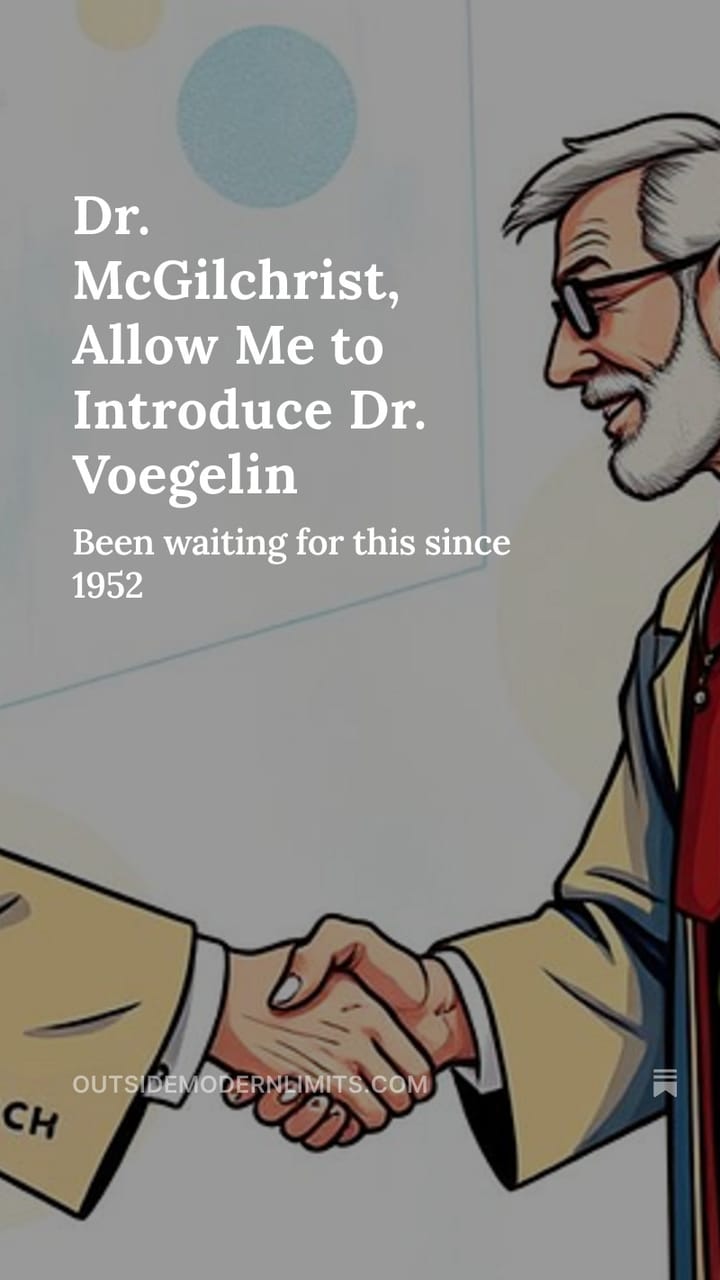The Gnostic Hates the Structure
Part VI of an Analysis of Eric Voegelin's Six Gnostic Traits (Part I, of Two Parts)

Ancient Gnosticism Presupposed an Elaborate Cosmological Structure of Evil
Ancient gnosticism used the ancient cosmic system: The earth was in the center, surrounded by the air and spheres: sun, moon, Mercury, Venus, Mars, Jupiter, Saturn, and a ring of fixed stars that close it all off.
That was more-or-less accepted astronomical science around the time of Christ. It was nothing novel.
But the ancient gnostic took the cosmological system one step further: it taught that the cosmological system was a prison.
Every ancient gnostic sect taught this idea. Most sects said the cosmos was the creation of an evil god, the “Demiurge,” who created the cosmos as a structure of deception. The Demiurge then outfitted the structure with demons and archons who acted as prison guards to make sure no one got out of this cosmological prison.
Gnosticism offered liberation from the prison. The cosmological prison was the sine qua non of gnosticism: If existence wasn’t a prison, the gnostic’s product—knowledge, the map, the plan for escaping the prison—was worthless.
Gnosticism without a structural evil to overcome is like football, baseball, or basketball without a ball.
The Gnostic Rejects the Metaxy
It’s a big problem.
Recall the metaxy: it’s that in-between area between transcendence and immanence.

The metaxy is a tough place. It’s tension between two poles, transcendence and immanence. It’s frustration and hope. It’s struggle and peace. It’s work and calm. It’s confusion and serenity.
It sucks and it doesn’t suck.
It’s a structure (see the pic) but it’s not a structure. The Tao is the symbol of its ineffable and ultimately mysterious nature.
The ancient gnostic didn’t appreciate that. He just said the entire cosmos is a structure. Moreover, he said it was a structure he understood and could defeat by escaping it, and that he could teach others how to escape it, and that our whole purpose was to escape it because the cosmological structure sucks.
It’s a fundamental misstep. It’s the biggest misstep because it is metaphysically primordial and frames everything in the picture.
The Gnostic Wants to Be Rid of the Structure: Either to Escape It or to Demolish It
An older guy recently told a young friend mourning the sudden and unexpected loss of his father: “Life’s a s*** sandwich. Every morning, you take another bite.”
The older guy is right, but he’s also wrong. Life might be a s*** sandwich, but there’s mouthwash, floss, and a toothbrush. It’s hard to get that taste out of your mouth, sure, but it can be managed. And occasionally, the bad taste is almost completely gone and things seem pretty good, until you have to take another bite.
To the ancient gnostic, there is no mouthwash, floss, or toothbrush. It’s all s*** sandwich, all the time, so the answer is to be rid of the s*** sandwich and the Demiurge who keeps cramming it down our throats with the evil structure he put in place. It’s no wonder the gnostic feels existential discontent and unhappiness.
The ancient gnostic taught his followers they could be rid of the s*** sandwich by escaping the structure.
The modern gnostic teaches her followers they can be rid of the s*** sandwich by demolishing the structure.
The Modern School of Structuralism
Modern thought tends to revolve around the idea that we live in an immanent structure. There is no transcendence; there is no metaxy. There’s just the earth with a massive dome of linguistic connections, inferences, presumptions, beliefs, customs, traditions, rules, and institutions that sits over every culture.
Most modern thought starts with the view that every culture sits imprisoned under a constellation of conceits that we created and then forgot that we created it.[1]And because we made it originally, we can unmake it and start over whenever we want. We can toss aside culture’s presumptions, beliefs, customs, rules, and institutions because they’re just all “artificial constructs.”
I’d say this general feeling laces modernity. Even if most moderns aren’t aware of it, it’s one of those presumptions that informs the modern attitude.
This attitude was largely formed by a philosophical school known as “structuralism.” It was founded by a Swiss linguist, Ferdinand de Saussure, whose lectures on language were collected by his students and published after his death in 1913. His ideas spread wildly and, by the mid-1960s, “structuralism” was considered an absolutely unassailable final source of truth . . . until Jacques Derrida came along and smashed it to bits (more on that later).
So what, exactly, is structuralism? It’s pretty dense stuff, but bear with me:
Structuralism in a Nutshell: Structuralism is “an interdisciplinary approach to all branches of human knowledge that rejects all ontological and epistemological sources of meaning in favor of an anti-metaphysical approach that posits that all humanistic pursuits are the products of deep structures that predate human consciousness.” Louis Markos.[2]
Structuralism teaches that words do not signify an underlying reality.
When you say “apple,” it doesn’t refer to a “real,” permanent idea of an apple that exists somewhere above us and comes down to us to inform human affairs, which was Plato’s philosophy of the forms. Forms, said Plato, give us ideas that impart real truth and are the origins of everything in our world; the forms give us centers around which meaning can coalesce.
The structuralist disagrees and says words merely connect a concept with a sound or image. Words are arbitrary (if they weren’t, we’d have only one language in the world). They only have meaning because they are part of a greater system of signs. That greater system is the social and cultural structure in which we live. Words are the signs through which we communicate with one another, whether it’s in print, video, or podcasts, and because words are given meaning by their place in the structure, then it’s the structure that gives us meaning: our words are products of an objective, materialistic, scientific, linguistic structure that determines the meanings of our words and thoughts. The system of language in which one exists (i.e., the structure a person is born into) determines thought. Thought doesn’t result in language but vice-versa.
The structure, it’s important to emphasize, comes from these concepts, it underlies us, informs us from down under, so to speak, unlike Plato’s idea that the forms come from above and inform us. All meaning is immanent to the structuralist, with no input from the transcendent.
Now, if all meaning comes from the immanent structure, then the structure is everything. Moreover, the structure constantly changes and grows. And if you can change the structure, then you can change meaning.
Structuralism’s Bottom Line: If all meaning derives from the structure, and the structure itself has no eternal permanence or truth embodied within it (but instead, is constantly growing and changing), then there is no transcendent truth, but rather, only a pattern of structures that can be plotted and analyzed through math and science (structuralists used the Cartesian coordinates to plot various signs). All mental pursuits, therefore, are mere emanations from the structures and, therefore, can be plotted and analyzed through math and science.[3]
The Gnostic Seeks to Disrupt the Structure: Voegelin’s Sixth Gnostic Trait
Recall Eric Voegelin’s sixth and final gnostic trait:
If it is possible, however, so to work a structural change in the given order of being that we can be satisfied with it as a perfect one, then it becomes the task of the gnostic to seek out the prescription for such a change. Knowledge – gnosis – of the method of altering being is the central concern of the gnostic. As the sixth feature of the gnostic attitude, therefore, we recognize the construction of a formula for self and world salvation, as well as the gnostic’s readiness to come forward as a prophet who will proclaim his knowledge about the salvation of mankind.
The gnostic rejects The Reality Spectrum. To the gnostic, ancient or modern, there is no Tao or metaxy.
To the modern gnostic, there is no transcendence: it’s all immanence, all the time, and the structure erected from immanence that imprisons us and makes life a s*** sandwich.
The gnostic hates the structure and wants to be rid of it.
The ancient gnostic wanted to escape the cosmic structure.[4]
The modern gnostic wants to demolish the immanent structure . . . and then erect a new structure that fits his idea for how things should be.
More on that in the next installment.
End of Part I of an analysis of Eric Voegelin’s Sixth Gnostic Trait
[1] Friedrich Nietzsche, “Truth and Falsity in an Ultramoral Sense.”
[2]Louis Markos, From Plato to Post-Modernism (a Great Courses lecture series by perhaps the finest lecturer I’ve ever heard . . . remarkably engaging and erudite)
[3] Hence the tendency of modern universities to study “social science” instead of “humanities.”
[4] Which is why so many of the sincere hippies from the 1960s migrated to northern California after the Haight-Ashbury culture collapsed: they wanted to escape the evil immanent structure (the hippie movement was largely an ancient gnostic movement).



